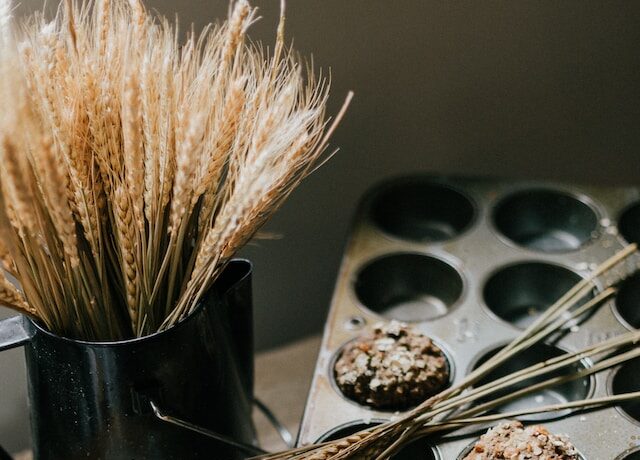Welcome to the definitive resource on gluten-free flours, which every baker ought to peruse! This thorough guide will assist you in navigating the world of gluten-free flours with confidence and inventiveness, regardless of whether you’re on a gluten-free diet or are just eager to try new baking choices. The world of gluten-free baking has advanced recently, and a wide range of flour substitutes are now accessible that can yield mouthwatering results without sacrificing flavour or texture. So grab your apron and join me as we embark on this adventure packed with flour!

Advantages of Using GF flours
There are several advantages to using gluten free flours in baking. These flours may change the game in the kitchen, whether you’re on a gluten-free diet or just want to try new things.
The fact that gluten-free flours are appropriate for people with celiac disease or gluten sensitivity is one of their main advantages. Gluten intolerant people can still enjoy tasty baked items without experiencing digestive problems by using rice flour or almond flour in place of typical wheat flour.
The nutritional content of many gluten-free flours provides an additional benefit. Certain options are high in protein and fibre, such as teff flour and quinoa flour. These nutrients support better overall health as well as the production of more pleasurable baked goods.
Furthermore, baking with gluten-free flours allows for endless creativity. There are a plethora of options to choose from, including sorghum and chickpea flour, so experimenting with flavours and textures is endless.
Additionally, using several types of flour in your recipes can give the finished dish more nuance and complexity. For instance, coconut flour gives cakes and cookies a light tropical flavour and moisture.
Accepting gluten-free flours gives bakers the chance to accommodate a range of dietary requirements. Providing gluten-free options guarantees that no one at the table has to give up on enjoying your delicious creations.
To sum up, utilising gluten-free flours has several advantages that go well beyond satisfying dietary requirements. They offer a way to eat healthily while still experimenting with flavours and sensations. So why not attempt them? Your palate will appreciate it!
Types of GF flours and How to Use Them
Regarding baking without gluten, there are a variety of flour substitutes that can accommodate varying dietary requirements and inclinations. Let’s examine several common varieties of gluten-free flour in more detail, along with some recipe ideas.
- Almond Flour: Made from ground almonds, this flour is healthful and gives baked items a delicious nutty flavour. It is excellent in pie crusts, cakes, and cookies.
- Coconut Flour: Made from dehydrated coconut meat, this flour has a low carbohydrate content and a high fibre content. Because of its distinct texture, which readily absorbs moisture, it works well for dense cakes, muffins, and pancakes.
- Rice Flour: This adaptable choice is created by finely powdering rice. Its flavour is light, and it can be used on its own or as a foundation for different gluten-free blends in dishes such as breads and pastries.
- Buckwheat Flour: Although the term refers to “wheat,” buckwheat is actually gluten-free! With its robust flavour profile, this nutrient-rich flour is perfect for baking pancakes, noodles, or even crepes.
- Quinoa Flour: This earthy-flavoured, high-protein flour substitute is made from ground quinoa seeds and works well in breads and muffins.
Keep in mind that every variety of gluten-free flour has distinct qualities, so you might need to modify the amount of liquid or leavening ingredients in your recipe. Finding the ideal balance will be aided by experimentation!
So go ahead and experiment with these varied possibilities to make delicious desserts without sacrificing flavour!

Advice for Baking with GF flours
Adding gluten-free flours to your baking arsenal can transform your baking abilities and enable you to produce delectable confections that cater to a wide audience. These pointers will help get you started in the right direction, even though it might take some trial and error to determine the ideal blend of gluten-free flours for your particular recipes:
- Begin with well-tested recipes: It’s recommended to start with tried-and-true recipes when using gluten-free flours for the first time. In this manner, you may see how various flours behave and adapt accordingly.
- Combine different flours: You can improve the taste and texture of your baked items by combining different gluten-free flours. You can get interesting and delicious results by experimenting with mixtures of rice flour, almond flour, tapioca starch, or sorghum flour.
- Use thickeners and binders: While gluten gives traditional baking its structure, gluten-free flours can still benefit from the use of binders like guar gum or xanthan gum. These chemicals aid in preventing crumbly textures and enhancing flexibility.
- Add enough moisture: Remember to add enough moisture to reach the proper consistency. Since gluten-free flours absorb more liquid than their wheat equivalents, it’s crucial to remember this. This could entail adding more eggs or other liquid components to recipes that call for them.
- Pay attention to cooking times: Because gluten-free flours differ from ordinary wheat-based goods in terms of density and moisture content, baking times may need to be adjusted. As your baked items cook, keep an eye on them and adjust the cooking time accordingly.





